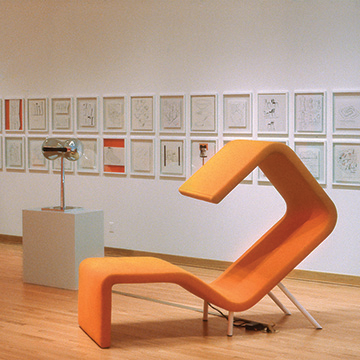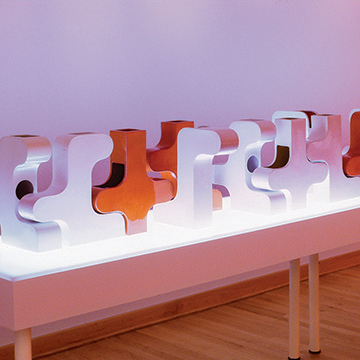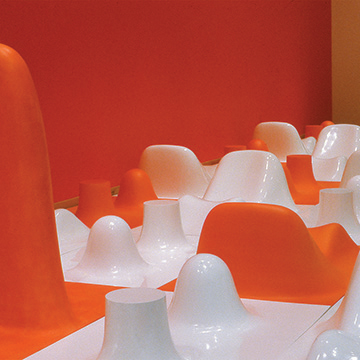Karim Rashid
Post-industrial design is a profession that will engage the immaterial, the dematerialization of the object. We will eventually reach a state where, as designers, we will have fewer physical objects to design. The argument of post-industrial design is that objects are becoming more technological and complex and, therefore, require other experts to be part of the materialization process. So, if I design a chip to be implanted in an arm or an eye or I develop e-money as a fingerprint, at some point there will be always the same issue, interface, interaction, navigation, and possibly some physical dock. If my fingerprint is my credit card, someone has to develop the interface. What do I put my finger on; what do I touch? Is it warm, cool, smooth, slippery; is it attached to something? Is there some feedback on whether my finger has that credit limit? Do I receive a receipt; is it visual or aural? Do I have to protect that print; is there a cool little sheath that becomes a fashion item, a sheath that can differentiate me from everyone else to support my need for individual expression?
Post-industrial design means bioengineers, scientists, behaviorists (although I consider that I am a behaviorist as a designer), doctors, geneticists, etc. But there is only one person who keeps a pulse on the public, on human life-the designer. The designer is an editor of culture, a conductor of the production of goods, the mediator between the corporation, the company and the audience. The designer has a phenomenological role to understand how our object landscape is engaged or disengaged, how things change our lives, shape our lives and touch our lives. An average person touches 500 objects a day. These objects range from the hyper-banal, such as a toothbrush, to the less than 1 percent probability of touching something new. Post-industrial design will deal with all our senses, as Gianfranco Zaccai once said, "Design has primarily focused on the visual and the tactile, but we are now." The kinesthetic, the sensorium, the omniexperiential: the future will be made up of an orgy of experiences. The digital age has created a new hypersensitivity, a more exotic connection with our senses, and a kaleidoscope of stimuli, of information, of living, loving and well-being.
-Karim Rashid
(adapted from I Want to Change the World, published by Universe Publishing, 2001)
Karim Rashid was born in Cairo, Egypt, in 1960. He is half English, half Egyptian and was raised mostly in Canada. In 1982, he received a bachelor of industrial design from Carleton University in Ottawa. He pursued graduate design studies in Naples, Italy, with Ettore Sottsass and others, then moved to Milan for one year at the Rodolfo Bonetto Studio. On his return to Canada, he worked for seven years with KAN Industrial Designers. While at KAN, he also cofounded and designed the Babel Fashion Collection and North from 1985-1991. Rashid opened his own practice in New York City in 1993. He has worked for numerous clients globally, such as Nambe, Umbra, Idee, lssey Miyake, Totem, Pure Design, Zeritalia, Fasem, Guzzini, Estee Lauder; Tommy Hilfiger; Giorgio Armani, Sony, Magis, Edra, Leonardo, Zanotta, Prada, Maybelline, Yahoo, George Kovacs, Citibank, Nienkamper and YSL.
Rashid has more than 70 objects in museum collections, and his design work has been exhibited at the Philadelphia Museum of Art," the Museum of Modern Art, New York; the San Francisco
Museum of Modern Art; Wexner Center, Columbus, Ohio; Museum of Decorative Arts, Montreal; Cooper-Hewitt National Design Museum, New York; The British Design Museum,
London; the Miami Museum of Contemporary Art; and The Groningen Museum, Holland, among others.





